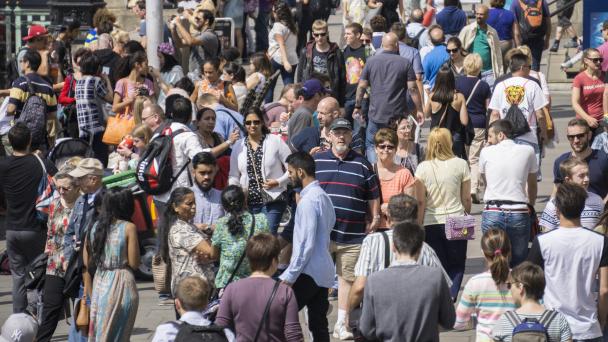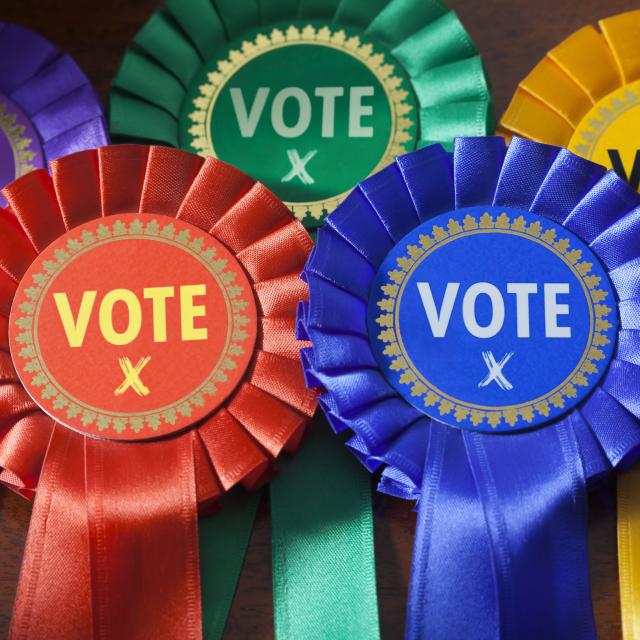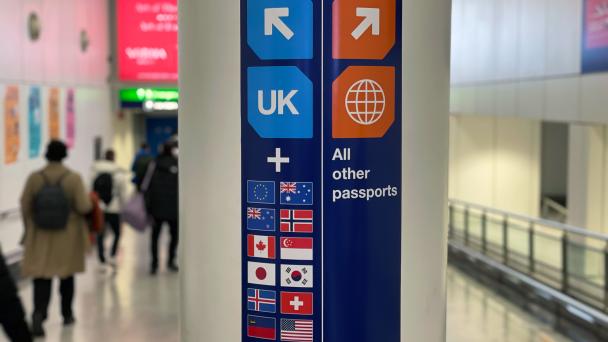Dividing lines: a classification of British voters


< Dividing Lines: A Classification of British Voters
When we asked people: ’If there was a general election tomorrow, which political party do you think you would most be likely to support?’, six political parties were selected by enough people for us to estimate who their supporter bases are. Here is where each party receives its support:
For the Conservatives, almost two in five (38%) of their supporters are Well-off Traditionalists, followed by Middle Britons (26%) and Left-behind Patriots (17%). Labour’s main backers are instead Urban Progressives (28%), followed by Middle Britons (22%) and Soft-Left Liberals (19%). For Reform UK, the backing comes from Left-Behind Patriots (33%), Middle Britons (28%) and Well-off Traditionalists (20%). In the diagram above, the support for Reform UK is combined with support for UKIP.
However, the groups are clearly divided on how close they feel to party politics. About four in five (83%) of Well-off Traditionalists would describe themselves as a party supporter. Among Urban Progressives, that’s about three in five (64%). For all other groups, this drops down to 12-28%.
Views on crime and justice are a key divide. For example, almost nine in ten (88%) Left-Behind Patriots believe that for some crimes, the death penalty is the most appropriate sentence. Among Soft-Left Liberals, that’s about one in ten (12%).
A majority (63%) of Left-Behind Patriots and a nearly half of Well-off Traditionalists (46%) believe immigrants increase crime rates. Less than one in six (15%) of the Apolitical Centrists would agree with that statement. Soft-Left Liberals (11% net agree) and Urban Progressives (3.3% net agree) are also of a different view.
Half (51%) of Middle Britons agree with the statement that people born in Britain should be given preference over immigrants when it comes to jobs, housing, or health care. Well-off Traditionalists (47% net agree) and Left-Behind Patriots (78% net agree) also include substantial support for this view.
Nine in ten (91%) Urban Progressives agree that the Government should redistribute income from the better-off to those who are less well off. That drops to less than one in ten (8.8%) among Well-off Traditionalists.
When asked how satisfied or dissatisfied they are with the way the National Health Service (NHS) runs nowadays, satisfaction didn’t vary much between groups. This is an issue all six groups can agree on, with low levels of satisfaction ranging between 21-28%.
The six Dividing Lines six voter types are based on data from the British Social Attitudes survey (BSA). BSA doesn’t rely on people opting in, rather it randomly selects members of households across the country, thereby generating a representative picture of the current electorate, and avoiding biases around political engagement or affiliation. This means that, unlike with other voter groupings, we can be sure that our segmentation is based on a truly representative sample of the British public.
We used machine learning to classify British voters into these six voting types. This method takes people’s answers across a series of questions based on NatCen’s left-right and libertarian-authoritarian scales, and looks for groups of voters with similar views.
But we didn’t stop there. A broad range of more recent issues were explored to assess whether they could simply be explained using the scales, or if other underlying divides in our outlook were at play. We put a series of hypotheses to the test and came up with a very large number of possible “clusters” of voters. We then assessed how strong these different cluster solutions were, and how much sense they made to us conceptually.
Ultimately, we settled on a classification that we found to be both robust and useful. Each of the voter types was notably distinct from the others; the classification does a good job of predicting views on a range of current issues, and each of the types represent enough of the electorate to be politically important and analysable.




Receive a regular update, sent directly to your inbox, with a summary of our current events, research, blogs and comment.
Subscribe